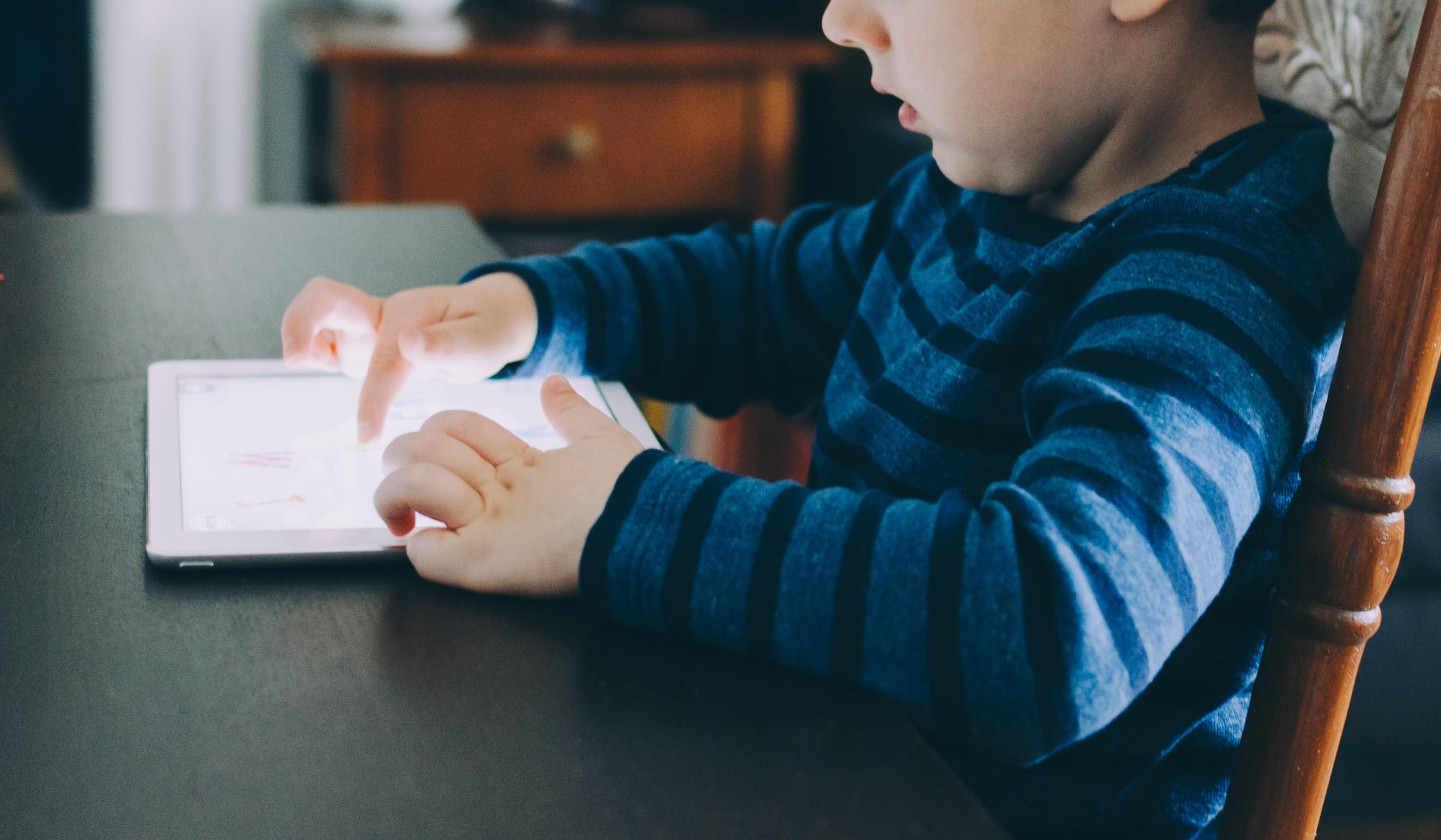“What's On?” The Impact Of Media On Kid's Emotional Well-being

With summer break upon us, kids will have much more free time. One of the most popular activities for summer involves using this free time for consuming more media. Gone are the days when this was primarily TV or DVDs. Today, media choices have exploded. Think Netflix, Youtube, and of course social media such as Instagram and Snapchat. With this increase in choices has come a sharp increase in screentime and negative content.
What impact do the content and the time devoted to viewing and engaging with media have on the emotional well-being of children? In this article, we will explore this question, and offer some strategies.
What are they watching?
Kids definitely still watch a lot of “traditional” media, such as movies and shows. The difference is that for many more kids, this is now happening frequently on smartphones, laptops, and tablets versus a television set.
The vast majority have very easy and unrestricted access to such devices. Around 41% of children ages 3 to 5 use the internet at home, 57% of kids ages 6 to 11, and 71% of 12- to 17-year-olds1. This, of course, does not account for the time spent on devices in cars, waiting during appointments, in restaurants, etc.; nor children in families using cellular data rather than home internet. Therefore, the number of children online is very likely higher.
What are they seeing?
With this also comes unsupervised access. That opens up more risk to disturbing content. This includes violence and hate content, drug and alcohol use, criminal activity, self-harm, and sexually explicit images/pornography.
While this might be hard to hear as a parent, unfortunately, it is common for kids to see and access such content. This is both intentionally and unintentionally, with the latter more often the case. More than half of kids 7 to 16 report having come across inappropriate content online accidentally2. And the main culprit? YouTube!
You may be thinking your child is one of the lucky ones who have not encountered such inappropriate content. Hopefully, that is the case. However, it turns out that 66% of kids have had a negative experience online, yet only 20% of parents were aware of it2.
Kids may not share this for a number of reasons. One is that they are embarrassed and don’t want this accentuated in a conversation with parents. Another is that they may fear that their access to media will be severely or completely restricted as a result and so they do not disclose the event. A third, especially for young children, is that they lack the cognitive maturity to really understand that what they are seeing is real or abnormal.
That said, there is much media that is positive. Media can bring compelling, inspiring, and entertaining information and experiences to kids that they may not be able to access any other way.
How does media impact children emotionally?
Researchers have been studying the impact of media on children’s emotional development for decades up to the present day3,4,5,6. Beginning with television, this was spurred on primarily by concerns about violent content; followed by areas such as gender and racial stereotypes; and then advertising, particularly for low-nutritious food.
As cable channels became more prevalent, along with subscription-sites such as HBO, this opened up research into these areas and others, such as drug and alcohol use, unrealistic body image, the sexualization of young girls, and the extreme horror genre. Today, we must add on social media, with the concern kids face about being accepted, and which has added cyberbullying to the mix.
So…what do we know?
- Fear and anxiety are present when children are exposed to media about catastrophic world events.
- Fear is present when children are exposed to violence and horror.
- Aggression is present and empathy decreased when children are exposed to violence and cyberbullying.
- Low self-esteem is present when children are exposed to unrealistic body image messages.
- Depression and anxiety are present when children are exposed to social media.
What we also know is that for 1 and 2, these emotional reactions are automatic-they are part of the reaction our bodies have when we see such things. For 3 through 5, these emotional reactions are not absolutely automatic, rather with more exposure they will become more prevalent.
Similarly, as in the section above, media can also trigger and lead to very positive emotions when it itself is positive, such as happiness, joy, and empathy3.
How can we help our kids consume media in a healthy way?
Children have an extraordinary and very necessary drive to grow and develop. Part of how this materializes is through the pressure they exert on their parents and other adults to be allowed to do more, make more of their own decisions, and have less parental supervision.
There is a balancing act with which parents are tasked. On the one hand, children do need to be supported in this drive. On the other, they must be protected from going too far too fast to ensure they are not overwhelmed, or worse, damaged emotionally.
Next up are some strategies for you to consider around media. Keep in mind that if certain media habits are already well-established in your household, do expect resistance so that it does not take you by surprise or undermine your intentions!
- Setting limits. Understandably, kids like media. In order to teach healthy media behaviors, they need exposure. However, this should be within reason, as the more time they spend consuming media, the more likely they are to run into the negative issues discussed. While certain organizations have attempted to give guidelines for screentime amounts, there has been pushback as they do not account fully for the qualifier of quality. Summer can be especially challenging as kids may feel more entitled to consume media. Setting up reasonable limits ahead of time rather than while a child is already engaged in media will help reduce those power struggles.
- Knowing what your child is viewing and doing with media is key. This is another challenge because smaller devices make it much more difficult to know. You can be in the same room and still not be able to know definitively what your child is doing. And kids are savvy. They will quickly close a browser if trying to avoid your monitoring. Similarly to setting limits, discussing and “approving” ahead of time, along with being confident about insisting that you oversee, can work well.
- Media consumption is a vital teaching opportunity and one that is best when ongoing. Giving children the ‘why’ using language and examples matched to their developmental maturity level will support them to be smart media consumers as they get older. This will allow them to be able to take over their own limit setting and monitoring as they are ready. Teaching them about the emotions and feelings they have or will be experiencing (both positive and negative) when consuming media is a great place to begin. The products offered by My Moods, My Choices can help you do this beautifully with kids.
Closing Thoughts
The term ubiquitous, meaning ever-present, is now applied to the presence of digital media in the lives of kids, and all of us in truth. Many of our children are spending more solitary time-consuming media on devices than in activities or conversation with parents, siblings, and other family members.
The opportunity to learn about emotions, such as being able to label them, to discuss them, to observe and then apply healthy emotional regulation, to learn to be emotionally intelligent in relationships with others in person, is slipping away. But with awareness and action, the next time the question, “What’s on?” comes up, you can answer with, “A walk”, “A game”, or “Let’s see. I’d love to watch a movie with you!”
References
1Child Trends. (2018). Home computer access and internet use. Bethesda, MD: Author.
2Livingstone, S., Kirwil, L., Ponte, C., & Staksrud, E. (2014). In their own words: What bothers children
online? European Journal of Communication, 29(3), 271-288.
3Bochicchio, V., Maldonato, N. M., Valerio, P., Vitelli, R., dell’Orco, S., & Scandurra, C. (2018, August). A review on the effects of digital play on children’s cognitive and socio-emotional development. In 2018 9th IEEE International Conference on Cognitive Infocommunications (CogInfoCom) (pp. 261-266). IEEE.
4Bushman, B. J., & Huesmann, L. R. (2006). Short-term and long-term effects of violent media on aggression in children and adults. Archives of Pediatrics & Adolescent Medicine, 160(4), 348-352.
5Hoge, E., Bickham, D., & Cantor, J. (2017). Digital media, anxiety, and depression in children. Pediatrics, 140(Supplement 2), S76-S80.
6Twenge, J. M., & Campbell, W. K. (2018). Associations between screen time and lower psychological well-being among children and adolescents: Evidence from a population-based study. Preventive Medicine Reports, 12, 271-283.
About the Author
Written by Lilla Dale McManis, MEd, Phd
Dr. McManis is a psychologist and certified parent coach. Drawing on her 30+ years of experience, her work focuses on promoting optimal outcomes for families. Her main mission is to do so by translating research into meaningful practice for parents, educators, programs and products, and policymakers.
Also in Blogs

Does Your Child Live in a High-Conflict Environment?

Parenting a Child with ADHD: 3 Sure-Fire Strategies for Better Communication

